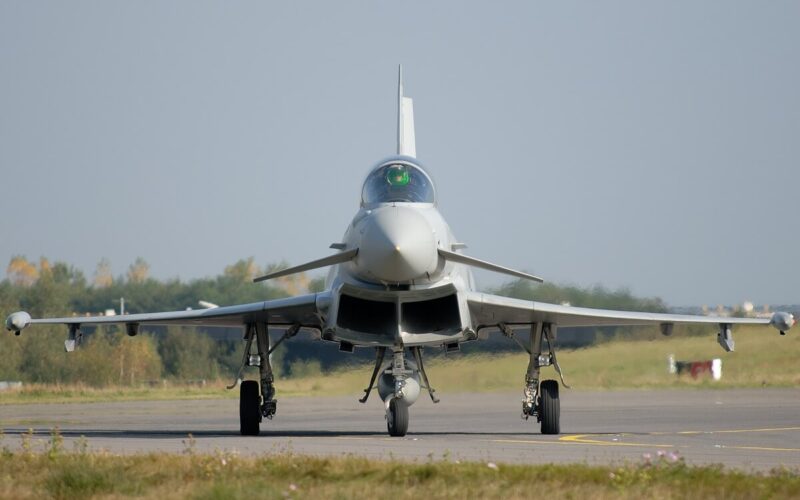Some time ago now, the decision to retire the Eurofighter Typhoon Tranche 1 fighter jets from the inventory of the British Royal Air Force (RAF) was confirmed, despite criticisms and speculations about the fate of these aircraft. Now, the UK Minister for Defense Procurement, James Cartlidge, has revealed the fate in store for the Typhoon T1s.
The Tranche 1 variant of the Typhoon, the oldest of the four that were developed, is restricted to the use of air-to-air missiles and has very limited air-ground capabilities without the use of an external pod. However, according to their manufacturer BAE Systems, upgrading the Typhoon T1 to a newer standard remained “technically feasible.”
Nevertheless, in early September 2021 the retirement of the 30 Typhoon Tranche 1 fighter jets in the RAF sustainment fleet, due to occur in 2025, was announced. This raised some controversy, as the fighter jets were set to be retired at just 42% of their useful life (2544.8 flying hours).
Stripped for parts
Contrary to expectations, the Typhoon T1 will not be sold on the second-hand market, despite attracting interest from Greece and Ukraine.
Instead, they will be ‘cannibalized,’ with their usable components being used to supplement the spare parts inventory of the existing Typhoon fleet. This decision was announced by the British minister, indicating that the components of the Typhoon T1 will be used to support the RAF’s remaining 107 Typhoons.
“Since February 2022 no Tranche 1 Typhoon aircraft have been retired from RAF service or donated to Ukraine,” Cartlidge said, answering a question to the government. “The Tranche 1 fleet will undergo a Reduce to Produce programme to strip them of useable parts to contribute to the Typhoon fleets spares inventory.”
A modernization program, funded to the tune of €2.75 billion, aims to upgrade the remaining Typhoons with the AESA ECRS Mk2 radar (European Common Radar System Mark 2).
“Spiral upgrades, including the integration of the UK-development Spear Cap 3, will be enhanced by a significant investment in Radar 2, providing a leap in operation capability that will ensure the Typhoon Force can survive and operate in the most challenging threat scenarios,” RAF spokesman Martin Tinworth explained to AeroTime at the time.
Untimely loss of combat air mass
The retirement of the Tranche 1 Typhoon aircraft was announced in a Defence Command Paper published on March 19, 2021. In recent years, the RAF has also retired 14 C-130J Hercules, to make way for the A400M and a fleet of six E-3D Airborne Early Warning & Control Sentry aircraft.
This ‘radical overhaul’ of the RAF was criticized in a report from the UK House of Commons Defence Committee published in September 2023.
“The RAF’s combat aircraft fleet now provides a boutique high capability: it lacks numerical depth and has an inadequate attrition reserve,” the report summarized. “Exquisite capability has its place, but in a peer-on-peer conflict such as a shooting war with Russia, every airframe will count. […] The MoD and RAF must consider as a matter of urgency how they can increase combat air mass in the short term.”

